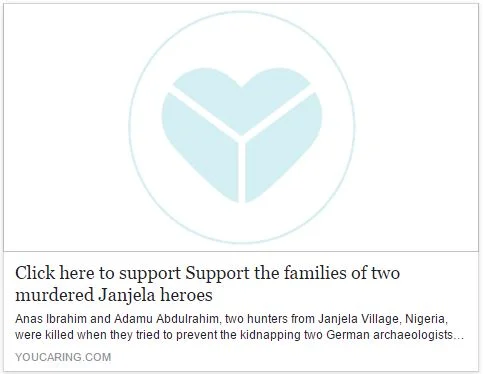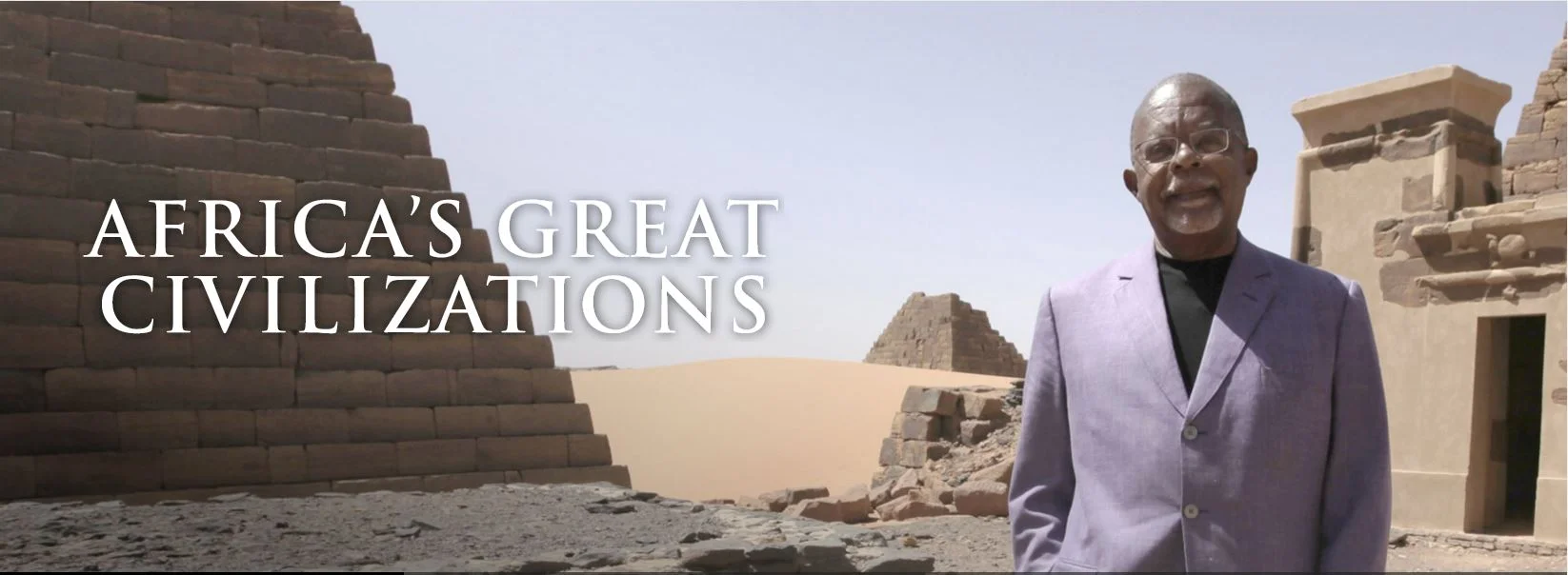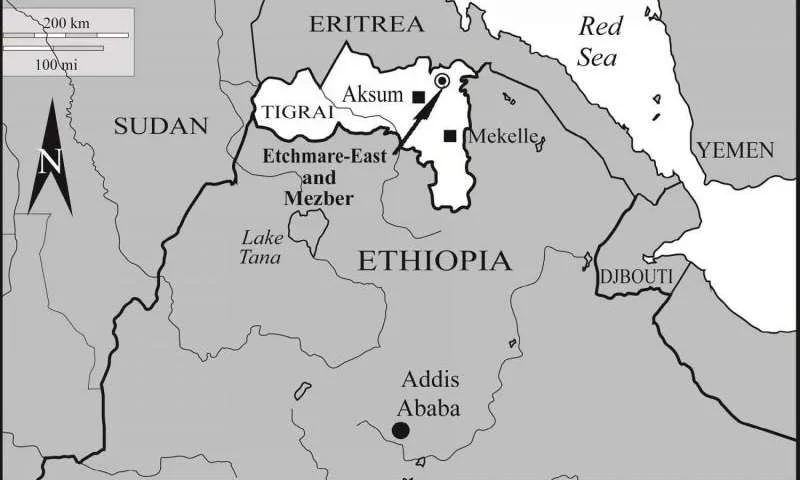The proceedings of the 2014 PanAfrican Archaeological Association Congress has been published in a volume titled African Archaeology without Frontiers: Papers from the 2014 PanAfrican Archaeological Association Congress. The volume has been published in open access and may be downloaded for free at OAPEN or on the Wits University Press website
Advocate and researcher of Ethiopian history and cultural heritage, Richard Pankhurst, dies at the age of 89
Ethiopians and foreign nationals from around the world, including many dignitaries, gathered last week at Holy Trinity Cathedral in Addis Ababa, Ethiopia to pay their respects to Richard Pankhurst, who died at his home in Addis Ababa on February 16, 2017. Dr. Pankhurst was a prolific historian of Ethiopia, founding member of the Institute of Ethiopian Studies (IES), advocate for Ethiopian cultural heritage, and leader of the campaign to return to Ethiopia the stolen Obelisk of Aksum.
Voice of America reporting that archaeologists Peter Breunig and Johannes Behringer have been freed from captors in Nigeria.
Crowdfunding in support of families of men killed trying to prevent the abduction of archaeologists in Nigeria
Crowdfunding initiative begun by Professors Akinwumi Ogundiran, Zacharys Gundu, and Willeke Wendrich in support of the families of Anas Ibrahim and Adamu Abdulrahim. Anas Ibrahim and Adamu Abdulrahim were killed attempting to prevent the kidnapping of archaeologists Professor Peter Breunig and student Johannes Behringers, members of the Nok Culture Archaeological Research Project who were abducted on February 22, 2017 in Janjela, Nigeria.
International Committee on Archaeological Heritage Management Annual Conference in Dar es Salaam, Tanzania, October 2-5, 2017
For more information:
http://icahm.icomos.org/tanzania_home.html
UCLA archaeologists enlist community to help preserve cultural heritage in Ethiopia
Click on image above for story from UCLA Newsroom. Or see link below:
Africa's Great Civilizations Premiering on PBS February 27, 2017
UN committee on safeguarding intangible cultural heritage opens session in Ethiopia
The United Nations Education, Scientific and Cultural Organization (UNESCO) committee brings together representatives of twenty-four States Parties to the Convention at the UN Economic Commission for Africa (UNECA) meetings in Addis Ababa, Ethiopia this week to examine five nominations for inscription on the UNESCO List of Intangible Cultural Heritage in Need of Urgent Safeguarding and thirty-seven requests for inscriptions on the Representative List of the Intangible Cultural Heritage of Humanity.
Click on link for full story from UN News Centre:
http://www.un.org/apps/news/story.asp?NewsID=55661#.WEDYLfkrKUk
Earliest Directly Dated Archaeological Evidence for Chickens in Africa Discovered in Ethiopia
Archaeologists working in northern Ethiopia have recovered and analyzed the earliest directly dated evidence for chickens in Africa. Radiocarbon dates on chicken bones and associated charcoal material from the site of Mezber in eastern Tigrai, Ethiopia provide evidence for the presence of domesticated chickens (Gallus gallus domesticus L.) in farming communities living between 800 and 900 BCE. The find is of great significance for understanding early food production and human exchange and interaction in Eastern Africa and the Red Sea Region three thousand years ago. The publication of the findings by archaeologists Helina Woldekiros (Washington University in Saint Louis, USA) and A. Catherine D'Andrea (Simon Fraser University, British Columbia, Canada) appears in the International Journal of Osteoarchaeology.
Read more at:
http://phys.org/news/2016-11-africa-oldest-domestic-chicken-bones.html#jCp
Original journal article:
Location of the Mezber archaeological site, northern Ethiopia, where chicken remains excavated. Credit: H. Woldekiros and A. C. D'Andrea in the International Journal of Osteoarchaeology.
New Cultural Heritage Organization Launches: Institute for Indian Ocean Heritage
The Institute for Indian Ocean Heritage (IIOH) has launched recently. From the IIOH's mission statement:
"The IIOH is a multi-dimensional institute that combines cutting-edge research with the innovative application of ideas to open-up operational, value-added approaches in Indian Ocean heritage. The IIOH is a ‘global’ template for new ways of engaging the human past and present for the future...
"The IIOH brings the Indian Ocean and its communities and pasts to the center of global scholarship, policy, public education, and tourism about heritage. IIOH members conduct responsible archaeological field projects, create heritage databases, and publish scholarly findings. Operating at the interface of heritage and stakeholders, IIOH members document and conserve heritage, advocate for ethical policies and practices that enhance the visibility and resiliency of heritage, educate invested parties, and through consultancy help to generate policies and outcomes that benefit stakeholders. The IIOH works closely with countries along the Indian Ocean rim, partnering with their governments, universities, and heritage institutes. In addition, the IIOH partners with multi-lateral agencies, like the Indian Ocean Rim Association and UNESCO, to preserve Indian Ocean heritage, tangible and intangible."
"Africa on the Move" Conference at University of Cambridge Announced
From the Conference Organizers:
To mark the 10th anniversary of the African Archaeology Group and the John Alexander seminar series at the University of Cambridge, we are holding a conference dedicated to ‘Africa on the Move.’ The dispersal of our species out of Africa sits prominently in the popular imagination while internal African diversity has received relatively little attention. In this conference we wish to focus on the dispersal of people, artefacts, and ideas within Africa throughout the ages.
For More Information:
http://www.mcdonald.cam.ac.uk/events/african-seminars
New dating and analysis published concerning human footprints found near Ol Doinyo Lengai volcano in Tanzania
An interdisciplinary research team has published a recent paper in the journal Palaeogeography, Palaeoclimatology, Palaeoecology concerning the dating of more than 400 Homo sapiens footprints at the Engare Sero site in northern Tanzania. The authors contend that the Engare Sero site provides the largest and best-preserved footprints of anatomically modern humans in Africa. Interpreting results from stable isotope analysis and other techniques, the researchers contend that the footprints were made by humans on a mudflat saturated by a freshwater spring and later inundated by water from Lake Natron. Results from Argon-argon dating and radiocarbon dating methods suggest that the footprints were made between about 5,700 years and 19,000 years ago.
See National Geographic story from October 10, 2016
See 2016 scholarly publication in Palaeogeography, Palaeoclimatology, Palaeoecology
Mudflats in the shadow of the Ol Doinyo Lengai volcano captured a huge trove of ancient human footprints.
PHOTOGRAPH BY ROBERT CLARK, NATIONAL GEOGRAPHIC CREATIVE
Ancestor rice of Suriname Maroons traced back to its African origin
Recent ethnobotanical, historical, and genetic research suggests that ancestor rice of Suriname Maroons can be traced back to its origin in Africa.
Tracing ancestor rice of Suriname Maroons back to its African origin. van Andel et al. 2016. Nature Plants 2, Article number: 16149 (2016). doi:10.1038/nplants.2016.149.
The World Archaeology Congress (WAC) announces Professor Peter R. Schmidt as the Peter Ucko Memorial Award recipient for 2016
The Peter Ucko Memorial Award* at WAC-8 Kyoto 2016 was awarded to Professor Peter R. Schmidt, Professor of Anthropology, University of Florida. He was also unanimously chosen by the Memorial Committee as the Peter Ucko Memorial Lecturer for WAC-8.
http://worldarch.org/blog/the-peter-ucko-archaeological-trust/
The Award Ceremony took place on August 30, 2016 during The World Archaeology Congress meetings (WAC-8) at Hardy Hall, Doshisha University, Japan.
The following is the announcement and introduction made at the ceremony on August 30 by Professor Koji Mizoguchi, President of The World Archaeological Congress:
"I am honored and privileged to announce that the Peter Ucko Memorial Award recipient at WAC-8 Kyoto 2016 is Professor Peter Schmidt, Professor of Anthropology, University of Florida.
Peter Schmidt embodies the cause of WAC by dedicating himself to the welfare of archaeology in Africa and the decolonization of African Archaeology for nearly five decades. After sixteen years of research in Tanzania on indigenous knowledge and innovative iron technology, he turned in 1985 to building the first department of archaeology in East Africa, now the Department of Archaeology and Heritage Studies at the University of Dar es Salaam. After nearly a decade of university administration as Director of African Studies at the University of Florida, he went back to Africa again, this time in Eritrea. There he constructed an interdisciplinary teaching and research program in anthropology, geography, and archaeology, training a number of undergraduates at the equivalent of the MA level, with many of them subsequently going on for higher degrees. In between these events he worked closely with the American Association for the Advancement of Science and Makerere University, Uganda, to establish a Human Rights and Peace Centre at Makerere in Kampala, Uganda.
These are indeed tremendous services to the furtherance of basic human rights in Africa, and it is truly remarkable that this has been achieved through archaeology and archaeology-related practices, in terms of cutting-edge research and education. His achievements show us it is indeed possible for us archaeologists to do something good to the world, and encourage us to follow him."
- Official announcement from Professor Koji Mizoguchi, President of The World Archaeological Congress, August 30, 2016
Key Participant in Cultural Heritage Sites Destruction in Mali Sentenced to Nine Years in Prison
Grand Opening of the Smithsonian Institution's National Museum of African American History & Culture
Saturday, September 24, 2016 is the opening day of the Smithsonian Institution's newest museum - The National Museum of African American History & Culture. Follow @NMAAHC all weekend-long during its Grand Opening celebration!
National Museum of African American History & Culture website
National Museum of African American History & Culture Facebook page
SAfA Election Results for the 2016-2018 Executive Committee
The Society of Africanist Archaeologists (SAfA) has posted the results of the election for its 2016-2018 Executive Committee. Members of the 2016-2018 Executive Committee were elected during the 23rd Biennial Meeting of SAfA in Toulouse, France, June 26 to July 2, 2016.
2016-2018 Executive Committee Members:
President: Eric Huysecom, University of Geneva
Organizing Secretary: Elisabeth Hildebrand, Stony Brook University
Recording Secretary: John Arthur, University of South Florida, St. Petersburg
Treasurer: Brian Clark (Rice University)
Member at Large (Africa): Hélène Timpoko Kienon-Kaboré, (Université Félix Houphouet-Boigny, Côte d'Ivoire)
Member-at-large (Africa): Kolewole Adekola
Member-at-large (Europe): Ralf Vogelsang (University of Cologne)
Member-at-large (North America): Carla Klehm (Washington University in St. Louis)
Student representative for North America (non-voting): Peter Coutros (Yale University)
Student representative
Nyame Akuma editors (non-voting): Dores Cruz (University of Denver) and Els Cornelissen (Royal Museum for Central Africa, Tervuren)
SAfA Webmaster (non-voting): Susan McIntosh (Rice University) and Cornelia Kleinitz (Humboldt University, Berlin)














